How to Improve Textile Color Matching and Color Formulation
Formulating a superior color match faster than the competition is the #1 priority – and challenge – facing textile dye houses. With time to market expectations increasing and requests for complex color palettes and additive concentrates like flame-retardancy and UV absorbers on the rise, textile dye houses must remain nimble and precise during formulation to stay ahead of the competition.
Challenges
- Formulating accurately against customer color standards
- Formulating quickly within customer timeframes
- Ensuring color consistency from formulation to production
Solution
Once the color palette is confirmed, digitally specifying a color’s spectral data along with tolerances eliminates the time, material, and transportation costs associated with physical prototypes and manual adjustments. Digital color standards allow brands to clearly communicate technical color and appearance specifications with suppliers in other locations like India, China and Southeast Asia for faster production with less color miscommunication and rework.
With color matching formulation software like Color iMatch, dye houses can leverage historical data to determine which recipes performed the best. They can also utilize the same spectral data from the digital color library used to gain approval during the design process to calculate fast and accurate recipes without multiple lab dips.
Results
Using an accurate and precise benchtop with high inter-instrument agreement and repeatability along with formulation software that formulates more accurate color matches, textile dye houses can reduce the lab dip and approval time up to 5x, taking it from days to just hours to get customer approval. This allows dye houses to perform more color matches every day, reduce material waste and shipping costs, and create a more sustainable workflow.
How It Works
- The customer provides a sample or requests a bid for a textile dye.
- The dyer takes a measurement of the target color with the Ci7830 benchtop spectrophotometer and sends the exact color data to Color iMatch software. Embedded NetProfiler status lights on the Ci7830 verifies to the dyer the device is optimized and ready for the measurement.
- Color iMatch identifies the best candidate formulas using the pigments and resins on hand and gives the option to include leftover materials to work off waste. The Search and Correct algorithm locates past recipes in the database, identifies the best candidate formulas for each color match, and suggests ways to rework leftover materials.
- The dyer creates a lab dip, measures it with the Ci7830, and validates it in Color iQC software to ensure it is within color tolerance before sending to the customer for approval without shipping physical samples.
- The dyer compares the lab dip against the customer sample in the SpectraLight QC light booth to ensure a visual match under applicable light sources.
- The formulation is ready to start production.
Featured Products
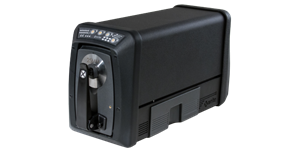
The Ci7830 reflectance benchtop is the supply chain instrument of choice, delivering ≤0.08 average dE* inter-instrument agreement and repeatability of ≤0.01 dE* to meet tight color tolerances.
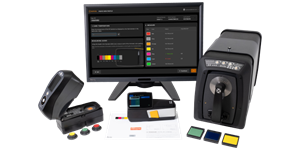
A cloud-based blend of software and color standards to automatically verify and optimize device performance and calibrate issues caused by age, wear, or environmental conditions and identifies instruments in need of service before they result in off-color products.
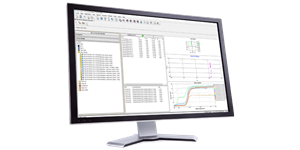
Color iMatch provides tools to optimize and improve existing legacy color data from a variety of systems so color matchers can accelerate color development through better first match performance and fewer correction steps.
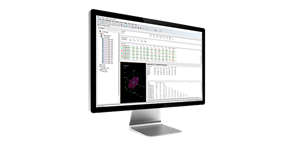
With Color iQC software, specifiers and suppliers achieve consistent color throughout the entire textile supply chain by monitoring color from specification to material suppliers to manufacturing and assembly.
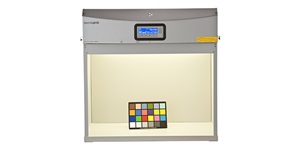
With 7 light sources including dimmable filtered-tungsten halogen daylight (class A) and optional LED, this top-of-the line light booth provides the most accurate daylight simulation available for optimum visual assessment.
Conclusion
Together, the X-Rite Ci7830 benchtop spectrophotometer, Color iMatch formulation software, Color iQC quality control software, and NetProfiler performance monitoring software can help textile dye houses meet new color trends and customer demands by capturing the most precise color data, using it to formulate and deliver the best initial matches for formulation, and ensuring all measurement devices are performing in unison.


